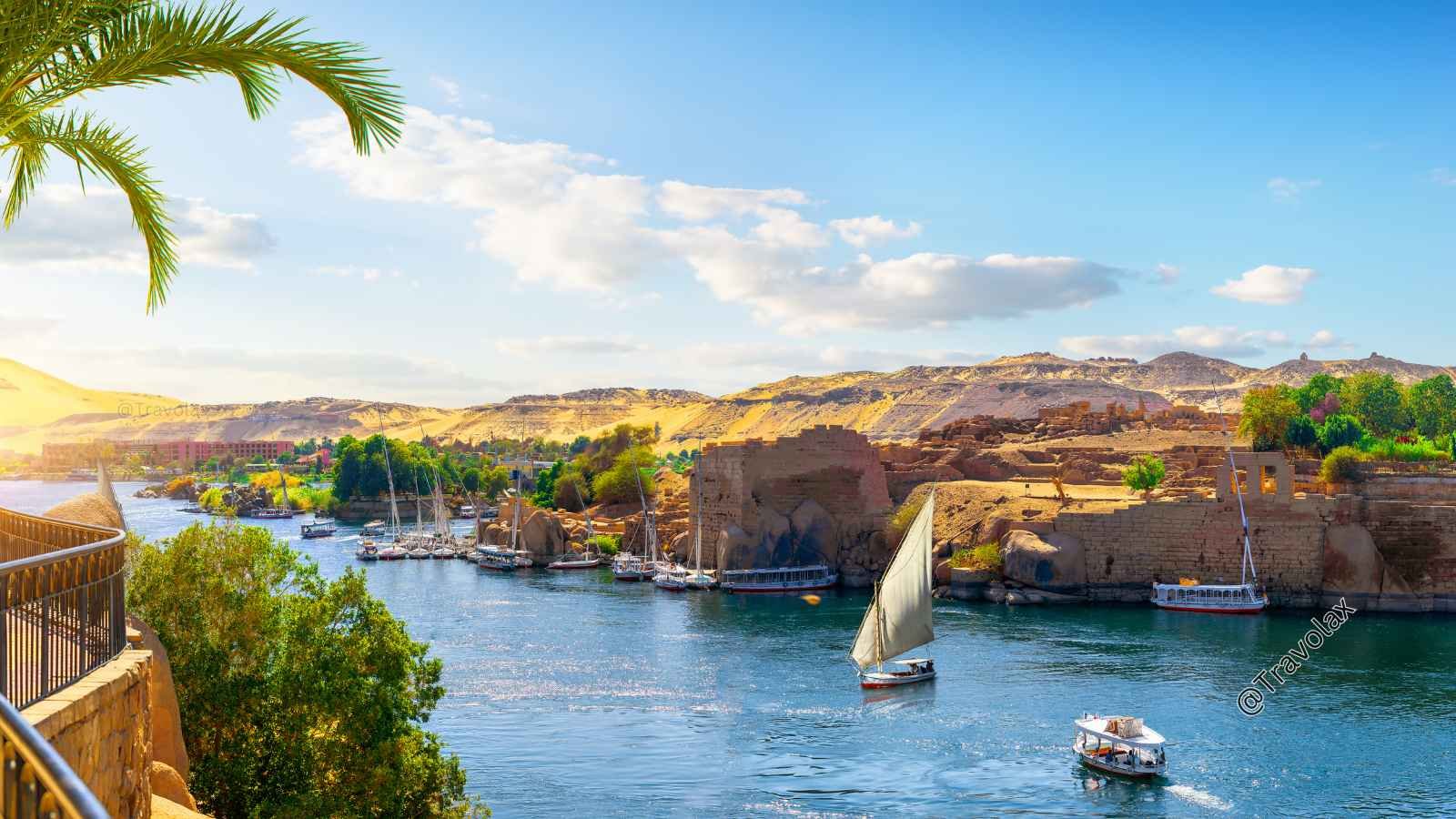A First-Time Guide to Cruising the Nile: Everything You Need to Know
There are few places in the world where you can drift through landscapes and lifestyles that have remained virtually unchanged for 4000 years. The Nile Valley in Egypt is one such place, and the best way to experience it is by cruising along the river itself, pausing occasionally to explore the awe-inspiring remnants of ancient Egyptian civilization. Whether you’re a history buff, a nature lover, or simply someone looking for a unique travel experience, a Nile cruise offers something unforgettable.
But where do you start? With so many options, questions, and practicalities, planning your first Nile cruise can feel overwhelming. Here’s everything you need to know to make your journey down the world’s most famous river as smooth and memorable as possible.
Recommended Travel Gears
Choosing the Right Type of Nile Cruise
The Nile offers a wide variety of cruising options, from massive six-deck cruise ships with over 100 cabins to small, intimate feluccas where you sleep under the stars. Here’s a breakdown of the most popular options:
Luxury Cruise Ships: These floating hotels come with all the amenities you could imagine—spas, pools, evening entertainment, and fine dining. They’re perfect if you want a more traditional, all-inclusive vacation experience.
Price: Around $800 per person, per night.
Feluccas: These small, traditional sailing boats are for the adventurous traveler. You’ll sleep on deck in your sleeping bag and enjoy a more rustic, back-to-basics experience.
Price: Around $100 per person, per night.
Dahabiyyas: For the perfect balance of comfort, authenticity, and exclusivity, consider a dahabiyya. These twin-masted, motorless sailing boats were once used by Egyptian royalty. With only 4–10 cabins, they offer a quieter, more intimate experience.
Price: Around $445 per person, per night.
For first-timers, a dahabiyya is a fantastic choice. It combines the charm of traditional sailing with modern comforts like en-suite bathrooms, excellent food, and the ability to dock in quiet, off-the-beaten-path locations. Plus, you’ll avoid the crowds that come with larger ships.
What to Expect on a Dahabiyya Cruise
I chose a week-long cruise aboard the Karnak, a 10-cabin dahabiyya run by an Egyptian-owned company. Here’s what made it special:
Flexible Stops: Unlike the big cruise ships that must dock at busy ports, our flat-bottomed boat could stop almost anywhere along the riverbank. One night, we had a barbecue under the stars; another morning, we enjoyed breakfast on the riverbank alongside a sleepy buffalo.
Comfortable Cabins: Each cabin came with an en-suite bathroom, mosquito screens, and even life vests. At night, the cool air rising from the Nile made sleeping with open windows a delight.
Eco-Friendly Travel: The Karnak was powered by the wind and solar panels, with a small tugboat towing us when the wind wasn’t favorable. This made for a quieter, more environmentally conscious journey.
Delicious Food: Meals were a highlight. Lunch was always vegetarian, while dinners featured meat or fish caught by local fishers. The Egyptian-Mediterranean cuisine was fresh and flavorful, prepared in the boat’s tiny kitchen.
One of the most memorable stops was the village of Bisaw, where we fished with locals, shared lunch with a family, and explored the village bread oven. It was a rare and humbling glimpse into daily life along the Nile.
When to Go
The best time to cruise the Nile is during the cooler months, from October to April, when temperatures are more comfortable. However, this is also the busiest season, with both the river and the historic sites teeming with tourists.
If you can handle the heat, consider visiting in May or June. During my early June trip, temperatures soared to 48°C (118°F), but the trade-off was worth it—crowd-free temples and tombs, and even Kom Ombo temple all to ourselves.
Pro tip: Most sights open at 6am, so you’ll often start your day early to take advantage of the cooler morning air.
Must-See Highlights Along the Nile
No Nile cruise is complete without stopping at these iconic sites:
Valley of the Kings (Luxor): This ancient burial ground of pharaohs is a must-see. Don’t miss King Tutankhamun’s tomb.
Karnak and Luxor Temples: These sprawling temple complexes on the east bank are breathtaking in their scale and detail.
Edfu Temple: Dedicated to Horus, this is one of the best-preserved temples in Egypt.
Kom Ombo Temple: A unique double temple dedicated to Sobek (the crocodile god) and Horus.
Philae Temple (Aswan): Relocated to Agilkia Island to save it from flooding, this temple is a stunning testament to ancient engineering.
Each site is brought to life by an Egyptologist guide, who provides fascinating insights into the history and symbolism of these ancient wonders.
Practical Tips for First-Time Nile Cruisers
What to Wear
Stick to light, breathable fabrics like cotton, linen, or silk to stay cool in the heat.
Opt for loose-fitting clothes that cover your skin to protect against the sun and respect local customs.
Bring a hat, sunglasses, sunscreen, and sturdy shoes for temple visits.
Onboard, casual clothing like sundresses and shorts are fine, but save the revealing outfits for elsewhere.
Packing Essentials
Binoculars: Perfect for birdwatching or observing life along the riverbank.
A detailed guidebook: You’ll want to supplement the information from your Egyptologist.
Antidiarrheal medication: Unfamiliar bacteria can upset your stomach, so it’s best to be prepared.
Health and Safety
Don’t swim in the Nile. While there are no crocodiles north of Aswan, the risk of contracting schistosomiasis (a parasitic disease) is high.
Use the provided waste bins for toilet paper—flushing it can cause plumbing issues.
How Much Time Do You Need?
Most Nile cruises last 4–6 days, traveling between Luxor and Aswan. Some cruises offer a round trip, while others extend to Lake Nasser, where you can explore the stunning Abu Simbel temples.
If you’re short on time, a four-night cruise will still allow you to see the major sites. But if you want a more leisurely experience, opt for a longer journey.
The Magic of the Nile
One of the most enchanting aspects of a Nile cruise is simply watching the river come to life. From the deck of the Karnak, I spent hours observing the timeless rhythms of life along the banks—farmers tending their fields, women washing clothes, children playing, and fishermen casting their nets.
The landscape itself is mesmerizing: lush green fields framed by golden desert dunes, with ancient temples rising in the distance. And then there’s the wildlife—herons, kingfishers, and the elusive hoopoe, which I finally spotted after years of hoping.
Disconnecting from the modern world (wi-fi is spotty at best) and immersing yourself in this timeless environment is an experience like no other.
How to Get There
The easiest way to start your Nile cruise is by flying directly to Luxor or Aswan. Alternatively, you can fly to Cairo, spend a few days exploring the city, and then take a train or domestic flight to your cruise departure point. Most cruise companies will help arrange transportation.
Final Thoughts
A Nile cruise is more than just a vacation—it’s a journey through history, culture, and nature. Whether you’re marveling at ancient temples, sharing a meal with locals, or simply relaxing on deck as the 4000-year-old landscape drifts by, the experience is unforgettable.
For first-time travelers, a dahabiyya offers the perfect blend of comfort, intimacy, and authenticity. So pack your binoculars, embrace the early mornings, and get ready to fall in love with the Nile.






